Geology Reference
In-Depth Information
Fig. 5.20
Part of a time section from a large-scale refraction profile, plotted in reduced time using a reduction velocity of 6 km s
-1
.The
section was derived from the LISPB lithospheric seismic profile across Britain established in 1974. Phase a
1
: head wave arrivals from a
shallow crustal refractor with a velocity of about 6.3 km s
-1
; phases c and e: wide-angle reflections from lower crustal interfaces: phase d:
head wave arrivals from the uppermost mantle (the
P
n
phase of earthquake seismology). (From Bamford
et al.
1978.)
capable of detection and delineation by fan-shooting
include salt domes, buried valleys and backfilled mine
shafts.
An irregular, areal distribution of shots and detectors
(Fig. 5.22(a)) represents a completely generalized ap-
proach to refraction surveying and facilitates mapping
of the three-dimensional geometry of a subsurface
refractor using the
time term method
of interpretation
(Willmore & Bancroft 1960, Berry & West 1966).
Rather than being an intrinsic aspect of the survey de-
sign, however, an areal distribution of shot points and
recording sites may result simply from an opportunistic
approach to refraction surveying in which freely avail-
able sources of seismic energy such as quarry blasts are
used to derive subsurface information from seismic
recordings.
The
time term method
uses the form of the travel-time
equation containing delay times (equation (5.18)) and is
subject to the same underlying assumptions as other in-
terpretation methods using delay times. However, in the
time term method a statistical approach is adopted to
deal with a redundancy of data inherent in the method
and to derive the best estimate of the interpretation para-
meters. Introducing an error term into the travel-time
equation
D
1
D
2
D
3
D
4
D
5
D
6
s
D
7
S
1
D
8
Time leads
associated with
ray paths
through salt
D
9
Salt
dome
s
S
2
Fig. 5.21
Fan-shooting for the detection of localized zones of
anomalous velocity.
any ray path which encounters an anomalous velocity
zone will be subject to a time lead or time lag depending
upon the velocity of the zone relative to the velocity of
the surrounding medium. Localized anomalous zones














